A Comprehensive Analysis of PepsiCo.edited
docx
keyboard_arrow_up
School
Oxford University *
*We aren’t endorsed by this school
Course
490
Subject
Business
Date
Nov 24, 2024
Type
docx
Pages
17
Uploaded by CommodoreRose5500
1
A Comprehensive Analysis of PepsiCo's Operations Strategy and Alignment with
Sustainable Development Goals
Name
Student ID
Module Code: BU51008
Date
2
Table of Contents
Executive Summary
...................................................................................................................................
3
Introduction
...............................................................................................................................................
3
PepsiCo's Business Model Canvas and Operations Strategy
.................................................................
4
Key Partnerships
...................................................................................................................................
4
Key Activities
.........................................................................................................................................
5
Key Resources
........................................................................................................................................
6
Value Propositions
.................................................................................................................................
7
Customer Relationships
........................................................................................................................
7
Channels
.................................................................................................................................................
8
Customer Segments
...............................................................................................................................
8
Cost Structure
........................................................................................................................................
9
Revenue Streams
.................................................................................................................................
10
In-Depth Analysis of PepsiCo's Operations Strategy
............................................................................
10
Sustainable Sourcing
...........................................................................................................................
10
Green Manufacturing
..........................................................................................................................
11
Sustainable Packaging
.........................................................................................................................
11
Nutrition and Access
............................................................................................................................
12
Alignment of PepsiCo's Operations Strategy with SDGs
.....................................................................
13
Critical Reflections on Learning
............................................................................................................
14
Conclusions and Recommendations
.......................................................................................................
15
References
................................................................................................................................................
17
3
Executive Summary
This extensive report provides a comprehensive analysis of PepsiCo's operations strategy
and alignment with sustainable development goals. PepsiCo's business model is examined using
the canvas methodology to understand its key activities, resources, partnerships and strategic
approach to delivering value. The analysis finds increasing integration of sustainability across
PepsiCo's value chain through sustainable sourcing, renewable energy, packaging reduction,
recycling, replenished water and access partnerships. PepsiCo's sustainability goals and programs
align strongly with UN Sustainable Development Goals on responsible consumption, climate
action, zero Hunger, good health, clean water and partnerships. While progress has been made,
opportunities remain to expand emissions reduction targets, increase recycled content in
packaging, and improve nutrition access. Overall, PepsiCo demonstrates effective practices in
embedding sustainability into its core operations strategy and business model. Recommendations
are provided for how PepsiCo can continue enhancing its sustainability performance and
contribution towards ethical, responsible operations management.
Introduction
This extensive report analyzes PepsiCo's corporate strategy, examining its operations
strategy and alignment with sustainable development goals. PepsiCo is a global leader in food
and beverages with iconic brands including Pepsi, Lay's, Gatorade and others. It has over $70
billion in revenues and 290,000 employees worldwide. The business model canvas methodology
is applied to systematically understand PepsiCo's key activities, partnerships, resources, cost
structure and revenue streams. The report provides an in-depth analysis of how sustainability is
incorporated into PepsiCo's operations strategy and business model, specifically related to
agriculture, manufacturing, distribution, packaging, access initiatives and partnerships. It
Your preview ends here
Eager to read complete document? Join bartleby learn and gain access to the full version
- Access to all documents
- Unlimited textbook solutions
- 24/7 expert homework help
4
evaluates how these strategies align with UN Sustainable Development Goals. Learning
reflections are also presented based on Rolfe's model. Finally, recommendations are provided for
how PepsiCo can continue improving its sustainability performance and strategic alignment with
global goals as a leader in the food and beverage industry.
PepsiCo's Business Model Canvas and Operations Strategy
PepsiCo operates in the food and beverage industry, owning brands such as Pepsi, Lay's,
Gatorade, Quaker and Tropicana. It manufactures and sells products across categories, including
snacks, beverages, nutrition and convenient foods. Below is an analysis of PepsiCo's key
partnerships, activities, resources, value propositions, customer relationships, channels,
segments, costs and revenues:
Key Partnerships
PepsiCo has extensive strategic partnerships across its value chain:
Suppliers - Thousands globally provide raw materials like potatoes, grains, fruits,
packaging materials, and other ingredients. PepsiCo engages closely with suppliers to
pursue sustainability initiatives.
Bottlers & Distributors - Many bottling partners produce and distribute PepsiCo
beverages globally. Third-party distributors provide logistics and warehousing to deliver
products to retail outlets. These partnerships are critical for reaching customers.
Strategic Alliances - Joint ventures, licensing deals, and collaborations with companies
like Starbucks, SodaStream, Beyond Meat allow PepsiCo to expand its product portfolio
into new categories, formats and experiences.
5
Communities - PepsiCo partners with communities, development organizations, and local
farmer cooperatives to increase access to food, water, nutrition and economic
opportunities. This supports sustainability.
Key Activities
Innovation - With annual R&D investments of $750 million, PepsiCo innovates across
multiple dimensions including new products, flavors, packaging, production processes,
brand experiences, and go-to-market systems.
New Product Development - PepsiCo utilizes a stage-gate process for developing and
launching products which includes research, creativity, prototypes, lab and consumer
validation testing, design engineering, market testing, and production ramp-up before full
launch.
Sustainable Sourcing - PepsiCo sources various crops, ingredients and inputs globally
and engages closely with suppliers to promote sustainable agriculture through training,
resources and incentives.
Manufacturing - PepsiCo manufactures products through ~262 company-owned facilities
and additional third-party contractors which provides flexibility to localize production. It
implements Lean techniques for efficiency.
Marketing & Sales - PepsiCo spends over $4 billion annually on advertising, digital
marketing, events, retail trade promotions and partnerships to engage consumers and
promote brands locally.
6
Distribution - With nearly 50,000 owned trucks and fleet operators, PepsiCo manages
direct store delivery to retail outlets. It further leverages independent bottlers and
distributors for widened reach.
Key Resources
Iconic Brands - Flagship brands like Pepsi, Lay's, and Gatorade have highly recognized
consumer brand equity globally. Other major brands like Quaker, Tropicana, Doritos,
bubly, etc. have strong market positions.
Global Infrastructure - Hundreds of owned manufacturing facilities, warehouses,
distribution centers, company fleet vehicles, and shared third-party facilities constitute
PepsiCo's worldwide infrastructure and supply chain network.
Innovation Capabilities - With nearly 5,000 R&D employees and facilities worldwide,
PepsiCo has strong capabilities in consumer research, product and package design,
prototyping, and commercialization processes.
Partner Ecosystem - PepsiCo's extensive partnerships across its value chain provide the
collaboration needed for innovation, efficient operations, and sustainability initiatives.
Sustainability Programs - Initiatives across agriculture, manufacturing, packaging,
distribution and access leverage PepsiCo's scale, infrastructure, and expertise to deliver a
positive impact.
Value Propositions
Tasty, indulgent snacks and beverages provide sensory flavor experiences and convey
enjoyment. Products meet needs for refreshment, hydration, and indulgence.
Your preview ends here
Eager to read complete document? Join bartleby learn and gain access to the full version
- Access to all documents
- Unlimited textbook solutions
- 24/7 expert homework help
7
Convenient, affordable sizes and formats were suitable for occasions like on-the-go,
shared snacks, individual servings, and stock-up value sizes. Pricing is accessible.
Beneficial nutrition and wellness with growing offerings of nutritious snacks and organic
products that serve whole grains, fruits and vegetables, protein and more.
Product variety across PepsiCo's snacks and beverages portfolio caters to diverse
consumer preferences and needs. Localization further tailors products to regional tastes.
Brand experiences through sports partnerships (NFL, EPL, etc.), pop culture connections
(music, movies), and digital engagement provide consumers culturally relevant brands
they identify with.
Customer Relationships
Retail Partnerships - Account managers collaborate closely with retail chains,
supermarkets, convenience stores on in-store activations, promotions, and loyalty
programs.
Consumer Engagement - Marketing campaigns, social media engagement, influencer
partnerships build awareness, educate consumers on new offerings, and foster brand
affinity and loyalty.
Data Analytics - Consumer insights teams utilize retail sales data, loyalty program data,
digital engagement metrics and proprietary research to understand preferences and trends
and personalize engagement.
8
Channels
Direct Store Delivery - PepsiCo owned and contracted fleet directly distributes to retail
stores, providing merchandising, shelf placement, inventory management along with
delivery.
Third Party Distributors - Broker networks provide transportation, logistics and
warehousing supplemented by PepsiCo's direct capabilities for small format stores and
expanded reach.
E-Commerce - Direct-to-consumer websites Snacks.com and PantryShop.com enable
online ordering and subscription delivery expanding availability.
Food Service - Dedicated customer teams service convenience chains, restaurants,
stadiums, workplaces and other food service outlets.
Customer Segments
PepsiCo tailors its portfolio, positioning and engagement to connect with relevant consumer
segments globally:
Demographics - Offerings cater to adults, families, youth, and kids with brands like
Gatorade, Propel, Quaker life and Frito-Lay. Affordability targets mass market and
emerging consumers.
Occasions - Brands map to breakfast, on-the-go snacking, evening relaxation, social
sharing, nostalgic cravings and more.
Lifestyles - Products aligned to health-conscious nutrition, organic, sustainable living,
and sports performance lifestyles.
9
Regions - Business units localized in 200+ countries provide foods and beverages tailored
to regional consumer needs and tastes.
Cost Structure
Major costs for PepsiCo include:
Raw materials, ingredients, and packaging materials comprise the largest cost.
Agricultural commodities are subject to market price fluctuations.
Manufacturing through hundreds of owned facilities and external contractors entails costs
for labor, utilities and operations.
Distribution through a vast company fleet, third-party logistics, and last-mile partners
involves transport, fuel, and labor expenses.
Marketing and advertising expenses exceed $4 billion annually to engage consumers
across all media and events worldwide.
R&D costs include technology, facilities, and thousands of employees developing
innovations.
Salaries and benefits for 290,000+ global employees is a major expense.
Revenue Streams
Food & beverage sales across multiple categories globally represent PepsiCo's primary
revenue, estimated at over $70 billion annually.
Growth opportunities through direct-to-consumer e-commerce where consumers order
online via snacks.com and pantryshop.com.
Supplier collaboration programs improve farmer livelihoods and provide shared value.
Your preview ends here
Eager to read complete document? Join bartleby learn and gain access to the full version
- Access to all documents
- Unlimited textbook solutions
- 24/7 expert homework help
10
PepsiCo's operations strategy balances global efficiency and scale with localization and
flexibility. Key priorities include distribution efficiency, sustainability across the value chain,
innovation through R&D partnerships, and leveraging strategic alliances to sustainably deliver
products worldwide. Overall, PepsiCo leverages its brands, infrastructure and capabilities to
provide consumers globally with convenient, enjoyable food and beverage choices through this
operational business model.
In-Depth Analysis of PepsiCo's Operations Strategy
PepsiCo has integrated sustainability into its core operations strategy across the value chain:
Sustainable Sourcing
Supplier Training - PepsiCo provides training programs for thousands of suppliers
globally on topics like water conservation, GHG emissions reduction, waste
management, recycling, and sustainable practices relevant to their operations.
Agricultural Best Practices - PepsiCo promotes regenerative agriculture techniques that
enrich soils, improve biodiversity, reduce chemical inputs. It also provides agronomic
support to farmers on planting techniques, equipment use, irrigation methods tailored to
local conditions.
100% Sustainable Sourcing - PepsiCo has set a goal to sustainably source 100% of key
crops like potatoes, whole grains, fruits, vegetables, oils by 2030. This refers to crops
grown using practices that reduce environmental impact.
Regenerative Agriculture - PepsiCo's five-year pilot program transitions acreage equal to
PepsiCo's entire agricultural footprint to regenerative practices that restore ecosystems
and absorb carbon.
11
Green Manufacturing
Renewable Electricity - PepsiCo aims to power all company-owned operations by 2030
and entire third party value chain by 2040 with 100% renewable electricity through onsite
solar, PPAs, RECs etc. This will dramatically reduce emissions.
Energy Efficiency - Advanced sensors, AI, equipment upgrades, LEED facilities and
process optimizations aim to improve energy efficiency by 20% across sites by 2025,
reducing energy expenses and emissions.
Circular Economy - PepsiCo follows principles of reduce, reuse, recycle and recover with
initiatives to minimize waste at source, enable recycling streams, and recover waste via
methods like anaerobic digestion biogas.
Water Stewardship - At high water-risk locations, PepsiCo implements replenishment
programs to returnamounts equivalent to manufacturing usage. This also provides access
to 59 billion liters of water to communities since 2006.
Sustainable Packaging
Recycled Content - PepsiCo aims to increase recycled content in its plastic packaging to
25% across its entire portfolio by 2025. This reduces dependence on virgin plastic.
Alternative Materials - PepsiCo continues to explore and develop innovative packaging
materials like home and industrial compostable films, bio-based materials from waste
streams, paper, and other alternatives to reduce plastic use.
Improved Recycling - To increase packaging circularity, PepsiCo invests in recycling
infrastructure and awareness in regions with lower collection rates through partnerships
and its Green Impact Fund.
12
Sustainable Design - Following sustainable design thinking, PepsiCo creates packaging
to be recyclable, compostable or biodegradable. Other innovations include snap-on caps,
thinner films, paper substrate use and more.
Nutrition and Access
Nutritious Portfolio - PepsiCo grows its portfolio of convenient, nutritious foods and
beverages under brands like Quaker, Tropicana, Naked, LIFEWTR which provide
beneficial vitamins, minerals, protein, whole grains, and servings of fruits & vegetables.
Food Provision Partnerships - Through partnerships with WFP, Rise Against Hunger,
Food for Good etc. PepsiCo helps provide meals for schools, disaster relief situations,
and underserved communities to increase nutrition access.
Nutrition Education - PepsiCo supports programs run by organizations to educate
children and parents on nutrition, healthier eating habits and lifestyles in vulnerable
communities lacking such knowledge and access.
Smallholder Sourcing - From crops like mango, cocoa, coconut, PepsiCo sources directly
from smallholder farmers adhering to sustainable practices, providing economic
livelihoods.
Through these initiatives, PepsiCo integrates principles of sustainability into its strategic
sourcing, manufacturing, packaging, distribution and access programs. This demonstrates how
sustainability can be embedded holistically across a company's entire value chain operations.
While continued progress is needed, PepsiCo shows leadership in incorporating sustainability
into its core business model to achieve commercial and social value.
Your preview ends here
Eager to read complete document? Join bartleby learn and gain access to the full version
- Access to all documents
- Unlimited textbook solutions
- 24/7 expert homework help
13
Alignment of PepsiCo's Operations Strategy with SDGs
PepsiCo's sustainability initiatives and measurable goals align to the following UN Sustainable
Development Goals:
SDG 2 (Zero Hunger) - Through programs to provide food access and partnering with
suppliers on sustainable agriculture.
SDG 3 (Good Health & Well-Being) - By offering nutritious products and supporting
nutrition education programs.
SDG 6 (Clean Water & Sanitation) - Via water replenishment initiatives in high-risk
watersheds and access partnerships.
SDG 12 (Responsible Consumption & Production) - Through sustainably sourcing crops,
recyclable packaging, recycling partnerships.
SDG 13 (Climate Action) - By targeting 100% renewable electricity and reducing
emissions from operations.
SDG 17 (Partnerships for the Goals) - By collaborating across its value chain with
suppliers, communities and more.
This demonstrates PepsiCo's strong strategic commitment to incorporate sustainability programs
across its business to contribute positively towards key UN Sustainable Development Goals. As a
leader in the food and beverage industry, PepsiCo can drive significant progress on global
priorities by embedding sustainability within its core operations.
14
Critical Reflections on Learning
Conducting this extensive strategic analysis provided diverse learning opportunities to
apply classroom concepts in evaluating a complex global business. The business model canvas
methodology enabled a systematic approach in examining PepsiCo's operations strategy.
Assessing alignment of sustainability initiatives with UN SDGs required comprehension of how
business operations intersect with global development objectives.
Through this project, I gained first-hand experience analyzing a large corporation across
its entire value chain. It provided perspective into how decisions made in one activity like
product packaging have ripple effects on wider issues like resource consumption, circular
economy principles, and more. This reinforced the complex interlinkages between operations and
sustainability considerations. Evaluating PepsiCo's strategy against best practices required
critical thinking skills to diagnose gaps and propose solutions grounded in academic concepts.
The independent research was valuable yet challenging. Gathering comprehensive
insights required synthesizing information from various sources like financial reports, case
studies, sustainability reports and news articles. This improved skills in compiling and
interpreting disparate sources of data to analyze strategy. Assessing the true impact of
sustainability programs across global value chains remains an inherent challenge as
quantification methods and reporting continue evolving.
Overall, this project equipped me with diverse skills in business model analysis, applying
classroom learnings into practice, understanding connections between operations and broader
strategy, conducting independent research, and formulating thoughtful recommendations
grounded in theory. This will aid significantly in systems thinking and ethical, responsible
decision making required in future business roles.
15
Conclusions and Recommendations
In conclusion, this analysis of PepsiCo provided a holistic perspective into the company's
operations strategy and how sustainability considerations are integrated across its entire value
chain. Concepts learned in this course were applied to evaluate PepsiCo across multiple
dimensions including key activities, partnerships, resources, sustainability initiatives and
alignment to SDGs.
PepsiCo demonstrates effective practices in incorporating principles of sustainability
related to agriculture, manufacturing, packaging, distribution and access into its core business
model and operations strategy. This increasingly connects its business objectives with positive
contributions towards UN Sustainable Development Goals.
However, opportunities remain for PepsiCo to continue improving its sustainability as per
these recommendations:
Set science-based targets to reduce emissions across its full value chain including scopes
1, 2 and 3 to meet Paris Agreement goals (PepsiCo, 2020; UN, 2021).
Increase recycled content in packaging to over 25% by 2025 to transition towards a
circular economy, while exploring innovative alternative materials to replace plastics
(PepsiCo, 2020; UN, 2021).
Expand nutrition product accessibility and affordability for lower-income consumer
segments to address malnutrition (PepsiCo, 2020; UN, 2021).
Engage smallholder farmers more broadly in sustainability programs for crops like palm
oil, cocoa and potatoes to increase benefits and alignment across its agricultural supply
chain (PepsiCo, 2020; UN, 2021).
Your preview ends here
Eager to read complete document? Join bartleby learn and gain access to the full version
- Access to all documents
- Unlimited textbook solutions
- 24/7 expert homework help
16
As an industry leader, PepsiCo is strongly positioned to continue driving sustainability
practices across its expansive distribution network and value chain. It should leverage its scale,
capabilities, and partnerships to integrate innovative solutions that embed sustainability into its
operations strategy and processes. This will further PepsiCo's leadership in ethical, responsible
operations management contributing towards sustainable development.
17
References
Osterwalder, A., & Pigneur, Y. (2010). Business model generation: a handbook for visionaries,
game changers, and challengers. John Wiley & Sons.
PepsiCo (2020). 2020 Sustainability Report. Retrieved from
https://www.pepsico.com/docs/default-source/sustainability-and-esg-topics/2020-
sustainability-
report.pdf?sfvrsn=bf192307_5#:~:text=PepsiCo%20is%20committed
%20to%20helping,t
o%20all%20updates%20and%20content.&text=commodities%20in
%2028%20countries
%2C%20with,sourced%20globally%20as%20of%202020
Home
(2023)
Sustainability
. Available at:
https://sustainabilityaction.pepsico.com/
(Accessed:
31 October 2023).
Rolfe, G., Freshwater, D., Jasper, M. (2001). Critical reflection in nursing and the helping
professions: a user’s guide. Palgrave Macmillan.
The Sustainable Development Goals (SDGs), 2021
(2021)
United Nations
. Available at:
https://www.un.org/en/desa/sustainable-development-goals-sdgs
(Accessed: 31 October
2023).
Related Documents
Recommended textbooks for you
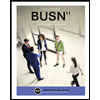
BUSN 11 Introduction to Business Student Edition
Business
ISBN:9781337407137
Author:Kelly
Publisher:Cengage Learning
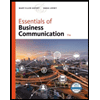
Essentials of Business Communication (MindTap Cou...
Business
ISBN:9781337386494
Author:Mary Ellen Guffey, Dana Loewy
Publisher:Cengage Learning
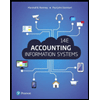
Accounting Information Systems (14th Edition)
Business
ISBN:9780134474021
Author:Marshall B. Romney, Paul J. Steinbart
Publisher:PEARSON
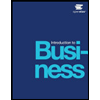
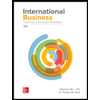
International Business: Competing in the Global M...
Business
ISBN:9781259929441
Author:Charles W. L. Hill Dr, G. Tomas M. Hult
Publisher:McGraw-Hill Education
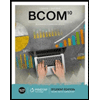
Recommended textbooks for you
 BUSN 11 Introduction to Business Student EditionBusinessISBN:9781337407137Author:KellyPublisher:Cengage Learning
BUSN 11 Introduction to Business Student EditionBusinessISBN:9781337407137Author:KellyPublisher:Cengage Learning Essentials of Business Communication (MindTap Cou...BusinessISBN:9781337386494Author:Mary Ellen Guffey, Dana LoewyPublisher:Cengage Learning
Essentials of Business Communication (MindTap Cou...BusinessISBN:9781337386494Author:Mary Ellen Guffey, Dana LoewyPublisher:Cengage Learning Accounting Information Systems (14th Edition)BusinessISBN:9780134474021Author:Marshall B. Romney, Paul J. SteinbartPublisher:PEARSON
Accounting Information Systems (14th Edition)BusinessISBN:9780134474021Author:Marshall B. Romney, Paul J. SteinbartPublisher:PEARSON
 International Business: Competing in the Global M...BusinessISBN:9781259929441Author:Charles W. L. Hill Dr, G. Tomas M. HultPublisher:McGraw-Hill Education
International Business: Competing in the Global M...BusinessISBN:9781259929441Author:Charles W. L. Hill Dr, G. Tomas M. HultPublisher:McGraw-Hill Education

BUSN 11 Introduction to Business Student Edition
Business
ISBN:9781337407137
Author:Kelly
Publisher:Cengage Learning

Essentials of Business Communication (MindTap Cou...
Business
ISBN:9781337386494
Author:Mary Ellen Guffey, Dana Loewy
Publisher:Cengage Learning

Accounting Information Systems (14th Edition)
Business
ISBN:9780134474021
Author:Marshall B. Romney, Paul J. Steinbart
Publisher:PEARSON


International Business: Competing in the Global M...
Business
ISBN:9781259929441
Author:Charles W. L. Hill Dr, G. Tomas M. Hult
Publisher:McGraw-Hill Education
